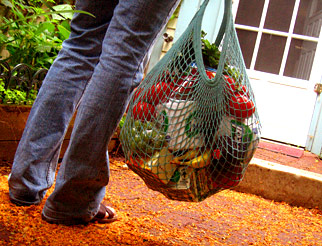Three in four Americans choose quality
over price for food, says survey
January 29, 2014

 A new IBM study reveals that despite tough economic times, Americans at all income levels are refusing to sacrifice quality, value and nutrition to save money on food and health & beauty purchases.
A new IBM study reveals that despite tough economic times, Americans at all income levels are refusing to sacrifice quality, value and nutrition to save money on food and health & beauty purchases.
The current economy has, however, led U.S. shoppers to take a closer look at the brands they typically purchase, the stores they frequent and even their preferred packaging to find new ways to save money. Americans surveyed confirmed this new in-store spending strategy will stick beyond the recession.
Results of the IBM survey were based on telephone interviews with 4,000 U.S. residents across all income levels, from those earning under $20K to $100K+. The survey found that 72% of respondents are more concerned with quality than price during their trip down the grocery aisle, and that behavior isn't likely to change - nine out of ten say that value and nutrition will be of equal or greater importance when the recession ends.
Consumers Shop Around for Deals to Preserve Spending on Quality and Nutrition
The survey reveals that Americans have become flexible about where to shop and what brands to buy, but consumers continue to place a premium on nutrition and are reluctant to go without items such as meat, poultry or coffee in order to economize:
-- 68% say nutrition is the most important consideration when food
Shopping
-- 49% are shopping at more stores to get the best deal
-- 35% have changed grocery stores to save money
-- 52% of consumers are reducing the volume of food they purchase from
the grocery store
-- 34% are choosing less expensive brands for health and personal care
supplies rather than sacrificing these products
-- 45% of those making less than $20K want foods that keep them full
longer
-- Meat, poultry, and coffee top the list of the one item shoppers don't
want to give up, but they are willing to cut spending on prepared
food, individual-sized beverages and clothing
Consumers Splurge on Different Products from Convenience to Organic
When asked how they would spend an extra $10, shoppers at varying incomes revealed the following priorities:
-- 13% of individuals making less than $45K will purchase more convenient
versions of foods they already buy, such as pre-cut vegetables,
compared to only 9% of those with a higher income
-- 19% of higher income levels $45,000 + are likely to spend their $10 on
more natural or organic versions of the items on their shopping list
-- 51% of consumers would most likely purchase more of the items on
their shopping list or buy the products in bulk packages
-- 20% of consumers would use their $10 to splurge on an item not on
their list
-- Across all segments, the top splurge item are dessert foods
Shopping Behavior Not Likely to Change When Recession Ends
Respondents vow that their new shopping priorities won't change when the recession ends.
-- 60% of consumers will continue to shop around for the best deal
-- 92% of consumers indicate that value will be of equal or greater
importance in food shopping
-- 90% of consumers indicate that nutrition will be of equal or greater
importance in food shopping
"Consumers are reducing spending in certain store aisles but maintaining or even increasing spending in others as they put a lot more thought into the brands they purchase and the type of products they need," said Guy Blissett, consumer products leader for IBM Institute for Business Value. "These results highlight how important it is for Consumer Products companies to deliver products and services with the right combination of benefits to meet the specific needs of consumers at each income level."
The Future of the Consumer Products (CP) Industry
The results provide additional context to the new IBM Institute for Business Value whitepaper titled, "The Future of the Consumer Products Industry: The end of the world... or a world of opportunity?" which identifies the powerful macroeconomic, demographic and social trends that are driving deep changes across the CP industry.
For most of the 20th century, the CP industry grew largely by improving its ability to develop and sell products to a relatively affluent, homogenous market of shoppers, who responded in familiar and predictable ways to the traditional 4 Ps of price, product, place(ment) and promotion.
The CP industry of the future will be led by those companies willing to take bold, innovative steps to define the markets they serve, re-imagine the channels they use, and transform current business models, while executing flawlessly against six capabilities:
-- Globalization - Balancing market demands for localization with
global/standard operating efficiencies
-- Differentiation - Deploying assets and processes to create sustainable
Differentiation
-- Integrated information - Integrating information to drive the business
through insight
-- Innovation - Create and deliver offerings that go beyond consumer
Expectations
-- Consumer-centricity - Finding new ways to connect with consumers
-- Corporate responsibility - Integrating corporate responsibility into
the organization's DNA.
SOURCE: IBM
PHOTO: Amy-Jeffries
.
You May Also Like


